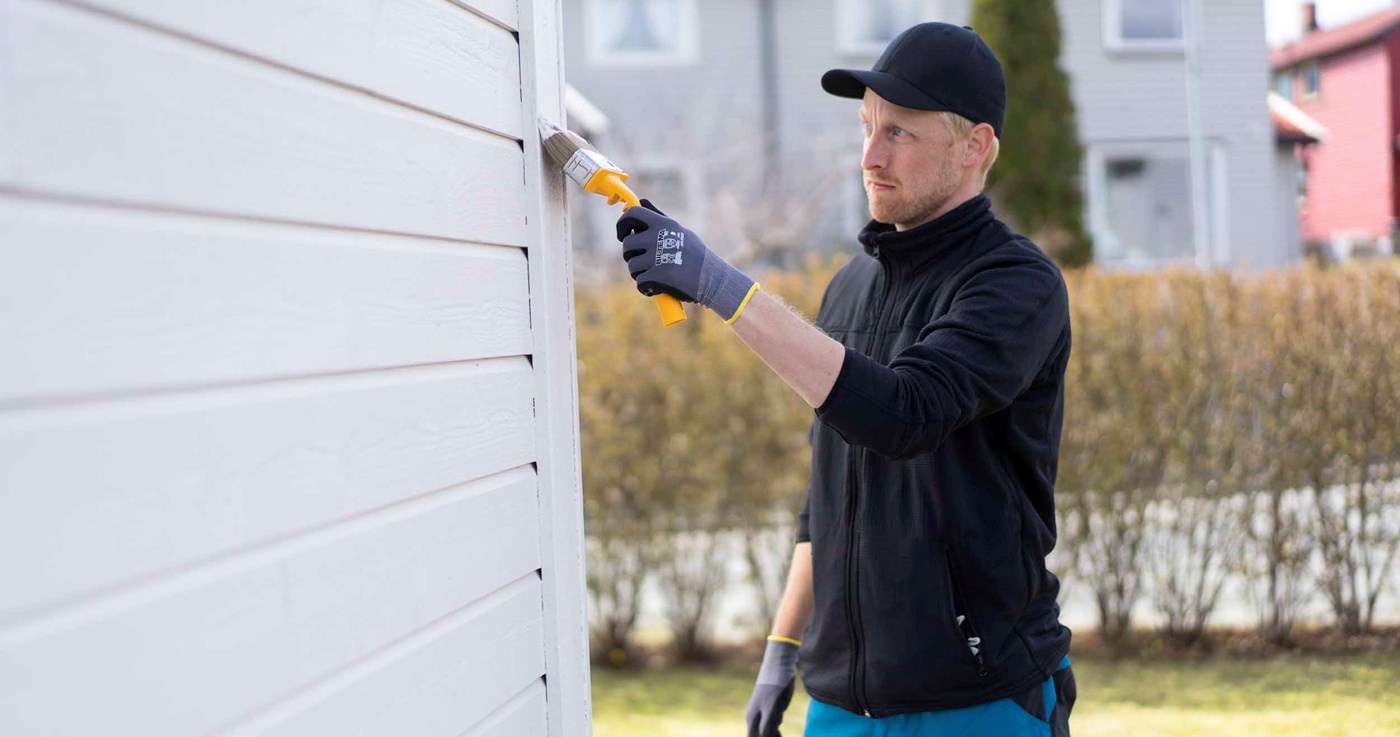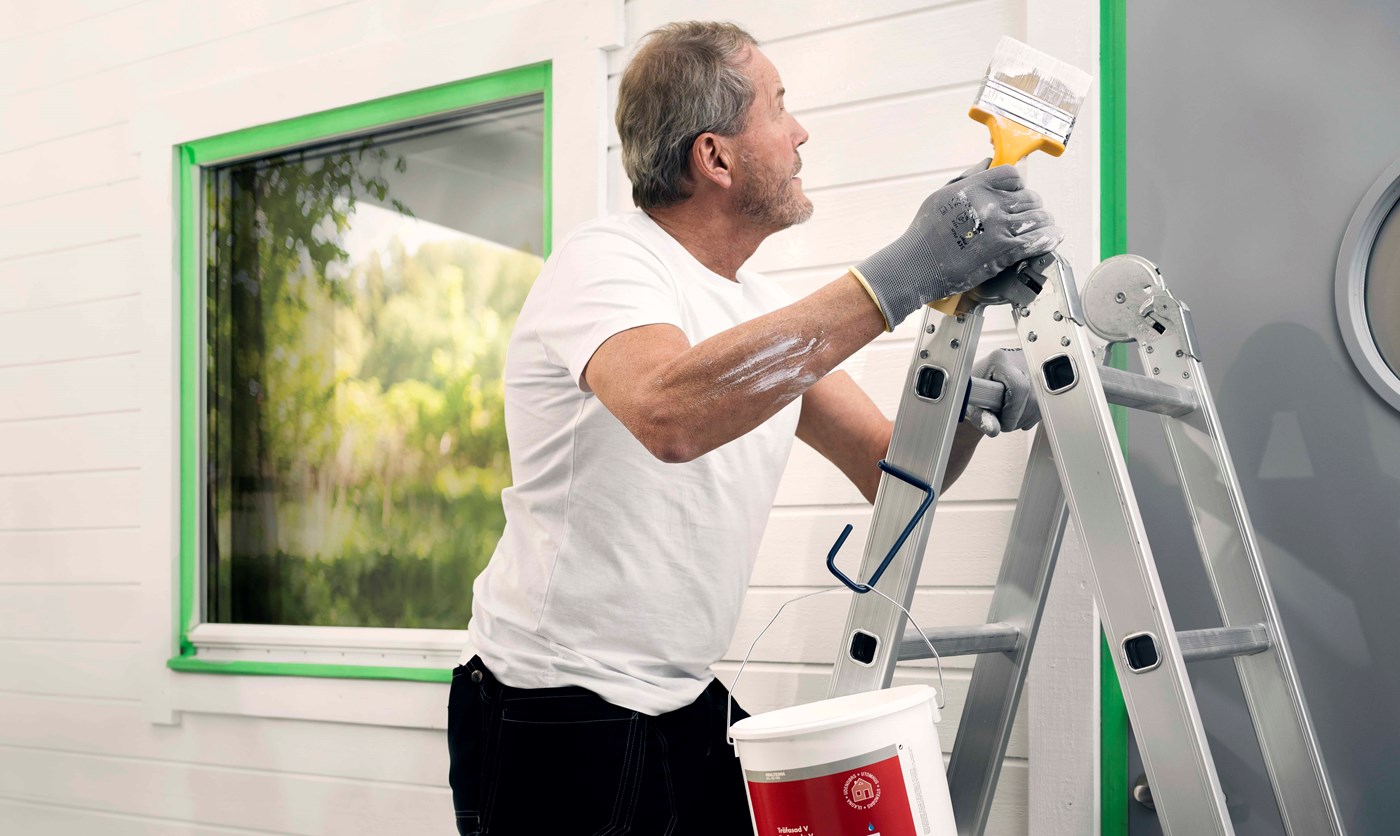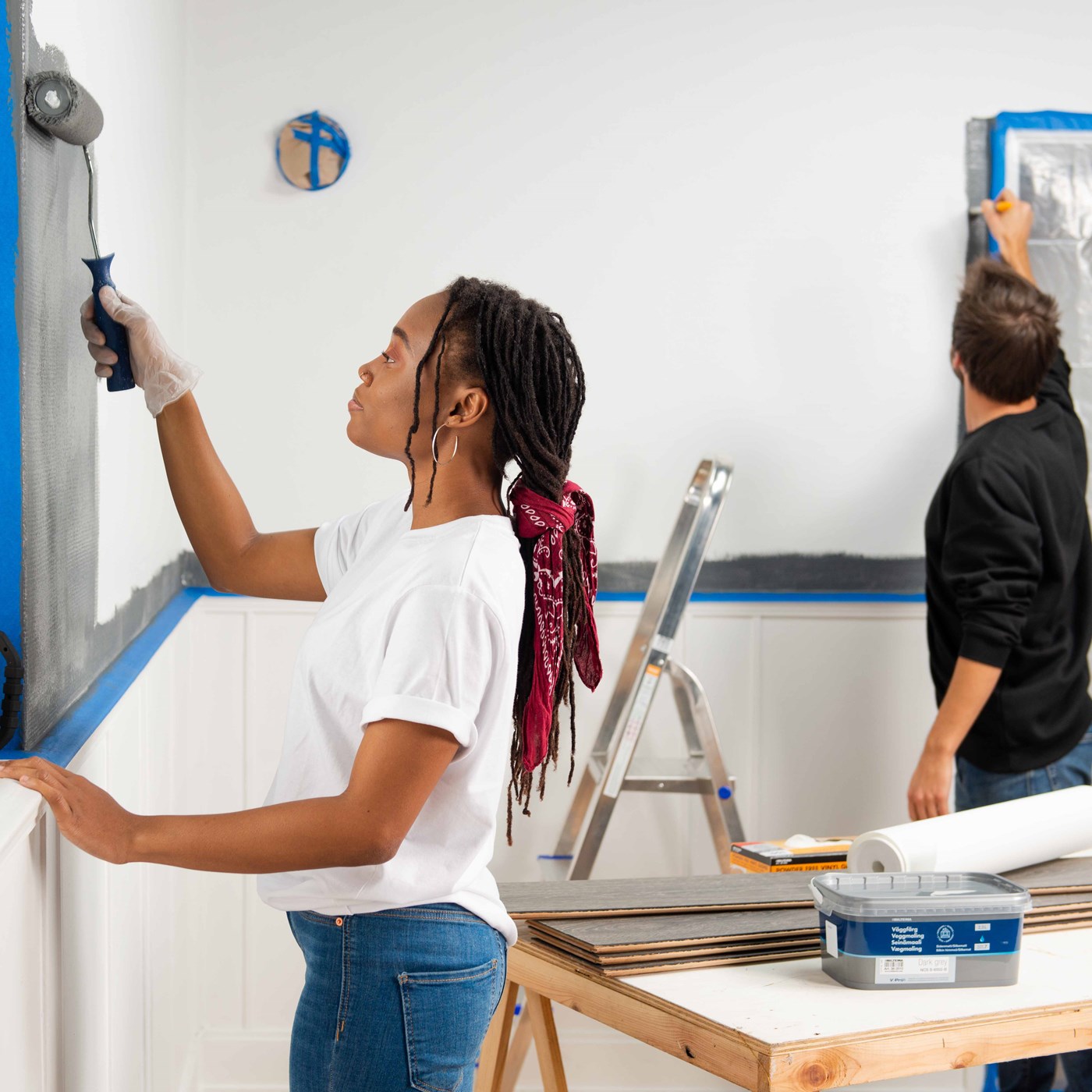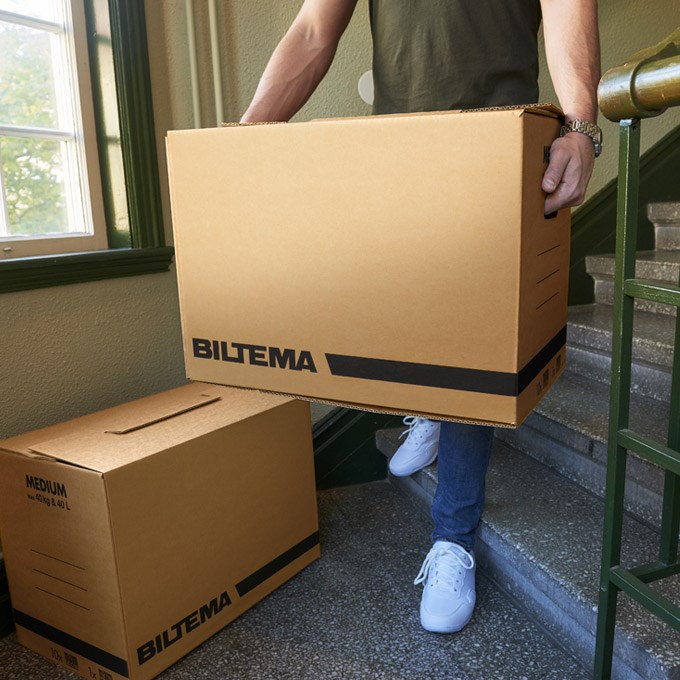6 colourful tips for outdoor painting
Before you start with your painting fun, it is important that you do proper and thorough preparatory work. The preparatory work accounts for about 75% of working time and only 25% is spent actually painting, if you want your façade to be long-lasting.
But what does the preparatory work mean? Don't worry, we'll help you! Below we list six things to consider when painting outdoors.
1. Scraper
You always need to start by scraping off old loose paint with a putty knife, scraper or steel brush, so that the surface becomes firm and even. Take extra care with joints and end-wood. Old Falu Red paint and glazed surfaces should be brushed with a steel brush. If you repaint with a different type of colour than the old Falu Red paint, then all old paint must be completely removed.
It can be time consuming, but worth the effort when you start painting. A hot tip is to get a proper scraper, it will make life easier for you. Also change the sandpaper and blades on the scraper at regular intervals, saving you a lot of time and energy!
Here you will find our efficient paint scrapers
2. Wash, wash and wash!
Now it is time to wash the façade, either with regular façade washing or with an algae and mould cleaner if the façade has been attacked. Be sure to rinse off all washing fluid with clean water.
The best option is to wash with a coarse brush with suitable façade and mould agent that both cleans and disinfects. The best way to wash is to apply the washing solution with the brush and then rinse off with clean water. If the washing solution is dried, the surface must be processed with a brush so that all the washing solution disappears when rinsed with water.
You should not use a high pressure cleaner, but simply flush the façade with a hose after brush washing. There is a high risk that the water will be pushed into cracks and joints, which will cause the wood to dry more slowly.
Do not forget to cover windows, gutters, plants and other surfaces that should not be washed. You should also think a little in reverse when washing and start from the bottom and go up. This makes it easier to drain the dirt when the surface below is already wet.
We offer cleaning products for your facad wash
3. Condition and repair
If it is a wooden façade that you are going to paint, you need to check the condition of the wood so that it is complete and not rotten in places. One tip is to check the wooden façade with a knife, to feel if the wood has become soft with rot. Replace damaged wood.
If you find cracks, you should scrape them up and then prime properly, smaller cracks can be repaired with filler.
4. Pre-treatment
Before you start painting the façade, you need to take note of the product's recommendations.
A general tip is to be careful with the pre-treatment on surfaces that are more exposed to moisture, such as end-wood, joints and nailed parts. Also give a little extra care to barge boards and window frames. Apply a primer oil to these exposed surfaces.
By pre-treating the façade, you reduce the risk of moisture penetrating and the façade being attacked by mould or digested fungus.
Keep in mind that bare wood should not be left unpainted for longer than 2 weeks.
Take a look at our product range of wooden oil
5. Priming
When the base oil has been applied, you should wait at least 30 minutes before painting with the primer.
The primer makes the paint coat adhere better and makes the substrate water-repellent, which is important to protect against moisture damage.
The basic painting should above all be carried out on the bare wooden surfaces that have not been painted before or bare wooden surfaces where you have removed old paint. If the façade has never before been painted, all surfaces that will later be painted with cover paint should also be primed.
Be sure to take extra care around exposed places such as end-wood, joints and window frames.
Here you will find our product range of exterior paint
And here you will find our painting accessories
6. Grand finale – the painting!
Now it's finally time for the most fun step in your painting, namely the painting itself and you've probably been thinking for hours about the perfect colour, glaze and durability.

When painting, we'd like to give you some tips:
- Avoid painting in the scorching sun or when it is damp. The ideal conditions are dry weather and a minimum temperature during the day of at least 7-8°C.
- Do not skimp on the paint and be careful in joints and small spaces.
- Allow the paint to dry for at least one and a half days before applying coat number 2.
And our last little tip? Let the painting be fun, do it together with someone you like!




